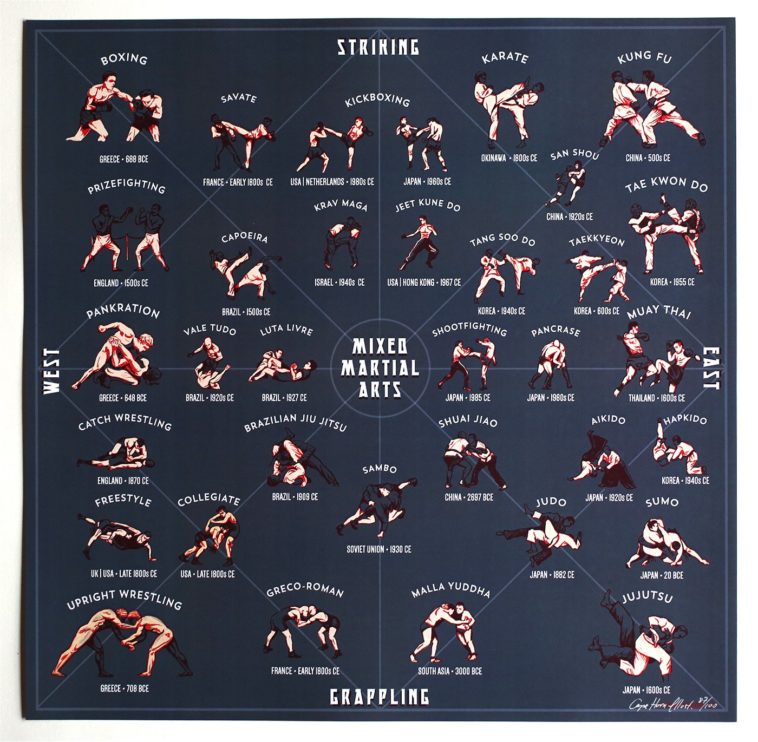Demystifying The Various Fighting Style Styles: From Martial Arts To Taekwondo
Demystifying The Various Fighting Style Styles: From Martial Arts To Taekwondo
Blog Article
Material Writer-Carlson Lemming
Are you tired of sensation overwhelmed by the huge world of martial arts? With a lot of designs to select from, it can be very easy to get shed in a sea of strikes, kicks, and mystical names. Yet concern not!
This conversation will demystify the different martial arts styles, taking you on a journey from the powerful strikes of Martial arts to the dynamic kicks of Taekwondo. Prepare to uncover the beginnings, techniques, and ideologies behind these ancient art kinds.
So, tighten your belt and prepare to start an enlightening expedition right into the exciting globe of martial arts.
Origins of Martial Arts Styles
The origins of fighting styles designs can be mapped back to ancient civilizations and their requirement for self-defense and fight techniques. Throughout background, various societies established their very own distinct methods of battling, each with its very own set of strategies and approaches.
In China, for instance, fighting styles styles such as Martial art and Tai Chi were created as a means of protection and enhancing physical and mental wellness.
In Japan, the samurai warriors produced styles like Karate and Judo, concentrating on discipline, precision, and mastery of the body.
Likewise, in Korea, Taekwondo emerged as a martial art emphasizing high kicks, quick activities, and psychological fortitude.
These very early civilizations laid the foundation for the varied range of martial arts styles that exist today, each with its very own abundant history and cultural significance.
Strategies and Educating Methods
To master fighting styles styles, professionals should find out various strategies and training approaches.
Methods are the details activities and actions used in combat, such as punches, kicks, throws, and obstructs. Different fighting styles styles have their own distinct set of methods that practitioners have to grasp with strenuous training.
Training approaches differ relying on the design, but they typically include a mix of physical conditioning, drills, sparring, and types.
Physical conditioning is important to construct toughness, versatility, and endurance. Drills aid specialists improve their strategies and boost their rate and precision.
Competing permits professionals to exercise their methods in a controlled, practical environment. Kinds, also referred to as kata, are deliberate sequences of motions that aid experts develop muscle memory and emphasis.
Viewpoints and Principles
Discovering the approaches and concepts of martial arts designs can provide you with a much deeper understanding of your picked self-control. https://realscreen.com/2022/08/22/martial-arts-series-kiddie-kai-to-launch-on-discovery/ fighting style has its own distinct ideology and collection of leading principles that form the way it's exercised.
For instance, Martial arts highlights technique, regard, and self-control. https://effects-of-martial-arts-o85260.qodsblog.com/33268212/taekwondo-a-course-to-mental-toughness-and-emphasis instructs professionals to focus their minds and bodies, allowing them to safeguard themselves while maintaining a feeling of inner peace.
On the other hand, Taekwondo places a strong focus on speed, agility, and adaptability. Its principles are rooted in the tenets of politeness, honesty, perseverance, self-control, and unbeatable spirit.
Conclusion
Now that you've explored the beginnings, techniques, and philosophies of various martial arts designs, you have a deeper understanding of these old techniques.
Think of a young karate student, experimenting unwavering decision and emphasis, appearing boards with a powerful strike.
Their journey showcases the commitment and toughness called for to understand a martial art, advising us that with technique and perseverance, anything is feasible.
